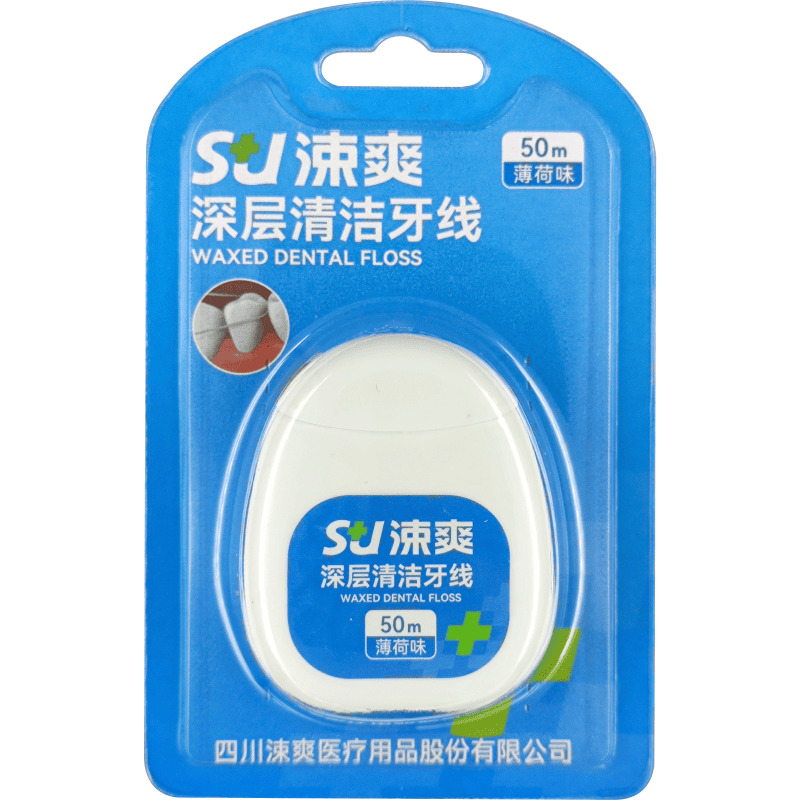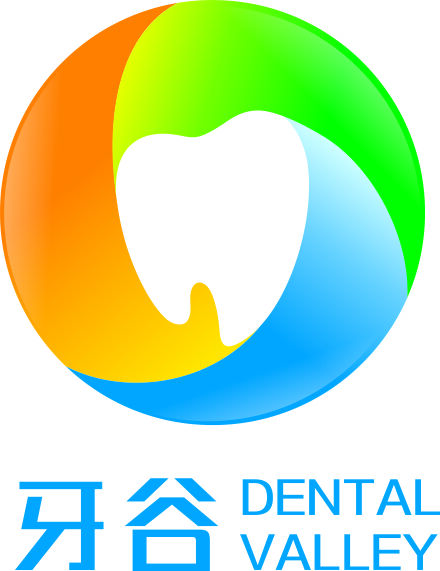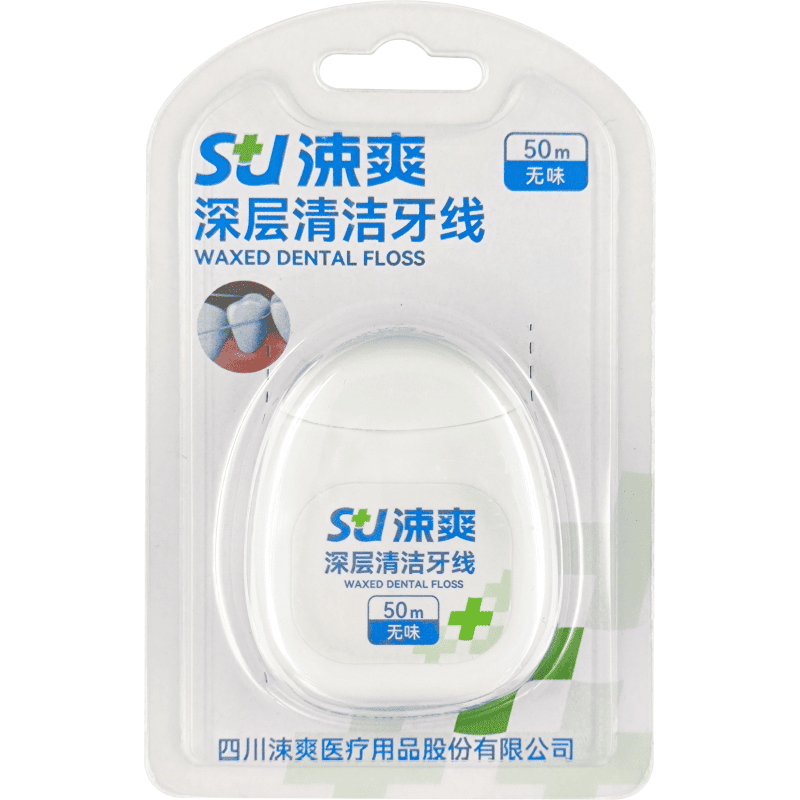Përparim i Larg dhe të Kostit Fillor në Larg dhe të Vlerës Larg dhe të Kohës
Rrezet e fshehura të mjeteve të lira të dhentaleve
Të blejsh me çmim të ulët mjete dentare nuk është gjithmonë marrëveshja më e mirë në të lungun e kohës. Sigurisht, blerja e mjeteve më të lira kursen para në fillim, por kursimet vijnë me një kosto për cilësinë e cila ka një ndikim të drejtpërdrejtë mbi pacientët. Shumë dhentistë përpiqen të kalojnë këtë rrugë duke menduar se po bëjnë një punë të mirë me buxhetin e tyre, vetëm për të përballur më shumë probleme më vonë. Këto mjete të buxhetit janë ndërtuar zakonisht nga materiale të cilësisë së ulët, prandaj ato konsumohen më shpejt dhe ndonjëherë edhe thyhen gjatë punës brenda gojës. Shoqata Dentare Amerikane ka kryer disa hulumtime që tregojnë se investimi i shtesë në mjete të cilësive të mira në fakt përmirëson rezultatet për pacientët, zvogëlon komplikacionet dhe e bën procedurat më të sigurta dhe më të suksesshme në përgjithësi. Në fund të ditës, vendosja e cilësisë përpara çmimit ka rëndësi nëse duam të vazhdojmë të ofrojmë kujdes dentar të shkëlqyeshëm pa u ballafaquar vazhdimisht me probleme.
Si Kursimet e Kostos çojnë në Zëvendësime të Shpeshta
Duke u përpjekur për të kursyer para në pajisjet e pastrimit të dhëmbëve mund të duket si një planifikim i mirë buxhetor në shikim të parë, por shumica e dhëmbistëve e dinë më mirë. Opsionet më të lira thjesht nuk zgjasin aq shumë sepse janë bërë me materiale të cilitetit të ulët. Një dhëmbist në një klinikë të kategorisë së lartë më tregoi për përvojën e tyre kur provuan të kalojnë në instrumente me kosto të ulët. Ata përfunduan duke zëvendësuar vazhdimisht mjete të thyera dhe duke u përbalë me dështime të pajisjeve gjatë procedurave, gjë që në fakt kushtoi shumë më tepër sesa çfarë kishin kursyer në fillim. Të dhënat nga industria e konfirmojnë këtë gjë edhe shumë klinika gjenden të bllokuara në një cikël të pafund të shpenzimeve ku vazhdojnë të blejnë mjete të reja në vend se të bëjnë një investim të vetëm të mirë. Pika kryesore? Të kursosh disa centa tani do të thotë në përgjithësi të paguash shumë më shumë më vonë.
Llogaritja e Kostit Total të Zyrës
Kur të shikoni mjetet dentare, llogaritja e kostos totale të posedimit (TCO) bën të ndryshojë gjithçka. TCO nuk është thjesht për atë që kushton diçka në fillim; përfshin faturat e mirëmbajtjes, shpenzimet e riparimit dhe se sa shpesh duhet të zëvendësohen pjesët. Dhëndësit që duan të marrin vendime të zgjuara financiare duhet të marrin parasysh këto kosto të fshehta së bashku me çmimin e etiketës. Merrni një situatë hipotetike: themi se një mjet fillon nga rreth 100 dollarë, kërkon rreth 20 dollarë mirëmbajtje në vit dhe zakonisht zgjat tre vjet para se të duhet të zëvendësohet. Kjo do të thotë se kostoja reale shtohet me kalimin e kohës, anash nga një shpenzim një herësi. Hulumtime nga sektori i kujdesit shëndetësor tregojnë se zgjedhja e opsionit më të lirë në të vërtetë mund të kushtojë më shumë në të ardhmen sepse ato sende tendenciozisht thyhen më shpejt. Pra, duke menduar për TCO, profesionistët mund ta zgjedhin pajisjen që kursen para në përgjithësi, në vend se të duket si një marrëveshje e mirë tani vetëm për të paguar më tepër më vonë.
Neglizhimi i Karakteristikave të Projektimit Ergonomik
Ndikimi i Ergonomisë së Dobët mbi Shëndetin e Profesionistëve
Kur profesionalët e dhëmbëve nuk i kushtojnë vëmendje projektimit ergonomik të mire në veglat e tyre, në fund të fundit ata përfundojnë duke u përballur me probleme të mëdha shëndetësore. Dhëmbëstët dhe higjenistët kryejnë të njëjtat lëvizje qindra herë në ditë, gjë që i nënshton duart, kockët e dorës dhe shpinën në presion të madh kur punojnë me vegla të papërshtatshme. Shoqata Amerikane e Higjenistëve të Dhëmbëve raporton diçka të mëdhënë: rreth 70% e punonjësve të fushës së dhëmbëve vuajnë nga dhimbja muskulare dhe lëndimet, kryesisht për shkak se veglat e tyre nuk janë projektuar me kujdes nga ana ergonomike. Këto lëndime të lidhura me punën nuk ngadalësojnë vetëm seancat e trajtimit; ato mund të kërkojnë kujdes mjekësor të shtrenjtë dhe madje të detyrojnë disa profesionalë të largohen nga puna më herët se sa duhet. Investimi në vegla dentare të projektuara në mënyrë të duhur bën ndryshimin. Kërkoni vegla me dorëza që përshtaten në mënyrë të këndshme në dorë, me vegla që nuk janë shumë të rënda dhe që i përshtaten në mënyrë natyrale pozicionit të trupit gjatë procedurave. Përmirësimet e tilla ulin lodhjen dhe mbajnë personelin dentar të shëndetshëm në afat të gjatë.
Konsiderata Ergonomike Esenciale për Veglat
Zgjedhja e mjeteve të duhura për pastrim të dhëmbëve do të thotë të kushtoni vëmendje se si ndihen në dorë gjatë punës reale. Projektimi i mirë ergonomik bën të ndryshojë gjithçka. Kërkoni dorëza që përshtaten natyrshëm në dorë, diçka që nuk rrëshqet kur duart bien të ftohta nga lëvizjet e përsëritura. Pesha gjithashtu ka rëndësi - mjete të rënda i lodhin shpejt gishtat pas orësh të punës në karrigen dentare. Shumë nga mjeteve moderne vijnë me pjesë që rregullohen, kështu që duart me madhësi të ndryshme mund të gjejnë pozicionin e tyre optimal. Stomatologët që përdorin këto mjete me projektim më të mirë raportojnë se janë në gjendje të kryejnë punë më të hollë pa shtresuar aq shumë muskujt. Sipas hulumtimeve të publikuara nga Revista e Hulumtimeve Stomatologjike, stomatologët që përdorin pajisje ergonomike të shëndetshme performojnë më mirë në përgjithësi, ndërsa përjetojnë më pak lëndime me kalimin e kohës. Kjo nuk është thjesht çështje komoditeti - ajo ndikon faktikisht në mënyrën se si pacientët marrin trajtim gjatë vizitave të tyre.
Inkurraktësia me pajisjet ekzistuese
Kur praktikat e dhëmbëve zgjedhin mjete që nuk punojnë mirë me ato që kanë tashmë, gjërat fillonin të shkëputen shpejt. Merrni këtë situatë reale që pamë së fundmi në një klinikë lokale. Ata blenë pajisje të reja dhe të çuditshme duke menduar se do të përmirësonin gjithçka, por pastaj zbuluan se ato nuk mund të komunikonin me sistemin e vjetër të softuerëve të tyre. Çfarë ndodhi më pas? Një ngatërresë me vonesa, termine të humbur në të majtë dhe të djathtë, dhe pacientë që u këngëtuan duke pritur më gjatë se sa pritej. Ne në fakt kemi punuar me një klinikë vitin e kaluar ku e gjithë operacioni u zhvendos pasi morën pajisje të papërputhshme. Komplanet e pacientëve u shtuan në mënyrë të shpejtë, stafi ishte gjithmonë i stresuar duke u përpoqur të zgjidhë probleme, dhe mendoni se çfarë? Fitimet e tyre u prekën gjithashtu. Shumica e menaxherëve të dhëmbëve do t'ju themi se kompatibiliteti është i rëndësishëm sepse kur sistemet punojnë së bashku në mënyrë të lëmuar, të gjithë fitojnë. Para se të shpenzoni tepër për gjëra të reja, hyni në kohë për të kontrolluar nëse ato punojnë mirë me ato që keni tashmë. Besoni më, kursimi i fytyrës para pacientëve dhe mbajtja e proceseve të punës në mënyrë të lëmuar vlen hulumtimin e shtuar në fillim.
Verifikimi i Kapaciteteve të Integrimi Para Blerjes
Marrja e mjeteve të reja stomatologjike që punojnë mirë me ato që janë tashmë në përdorim është shumë e rëndësishme për të mbajtur gjithçka të lëvizë lehtë në çdo klinikë. Shumë dentisët e dinë këtë nga përvoja kur blejnë diçka të re për praktikën e tyre. Një ide e mirë para se të blihet çdo gjë e re është të kryheni disa kontrollime të thjeshta për mënyrën se si do të përshtakhet me sistemet e tanishme. Shikoni nëse softueret punojnë së bashku në fillim, pastaj kontrolloni nëse ka nevojë për përditësime nga njëra apo tjetra anë. Gjithashtu është e rëndësishme të siguroheni që çdo gjë që blihet i përmbahet në të vërtetë standardeve të pranuara për punën në mes të markave dhe modeleve të ndryshme. Kemi parë shumë klinika që hasin probleme pasi kanë anashkaluar këto hapa, ndonjëherë duke uballë në shpenzime të papritura apo ndërprerje për shkak të mungesës së planifikimit të mirë paraprak. Megjithatë, koha e harxhuar për këto kontrollime me të vërtetë që vlen. Profesionistët e stomatologjisë që i përqasen kështu, në përgjithësi i shmangin vështirësitë më vonë dhe mbajnë proceset e punës të efikas. Dhe së fundi, askush nuk dëshiron të përballet me teknologji të prishur gjatë vizitave të pacientëve!
Neglizhimi i Standardëve të Përputhshmërisë Rregulatore
Rreziqet e Lidhura me Instrumentet Jo të Certifikuara
Kabinetet e dhëmbëshës që përdorin mjete të pa certifikuara për pastrim, i vendosin veten në probleme të mëdha ligjore dhe profesionale. Këto mjete të pacertifikuara thjesht nuk i nënshtrohen proceseve të njëjta të testimit të gjithanshëm që garantojnë se funksionojnë në mënyrë të sigurtë dhe të saktë. Merrni një situatë të vërtetë ku një dhëmbëshës u përgjegjë për neglizencë pasi një mjet i prodhuar gabimisht i kënuar pacientin. Lloji i tillë i situatave e thekson me saktësi pse certifikimi është aq i rëndësishëm. Kur ndodhin këto lloj padijesh, përveç humbjes së parave, reputacioni i tërë praktikës tërheqët në sytë e komunitetit. Më keq, përdorimi i pajisjeve të lira ose me defekt i vendos në rrezik njerëzit në të vërtetë. Ne kemi parë raste ku dhëmbëshësit kanë humbur licencat e tyre sepse kanë përdorur pajisje që nuk ishin në përputhje me standardet. Për këdo që drejton një praktikë dhëmbëshësie, përdorimi i pajisjeve të certifikuara nuk është thjesht çështje rregullash – është çështje sigurie për të gjithë, përfshirë edhe vetë praktikantët.
Certifikimet Kyçe për Veglat e Pastrojëve Dentare
Zgjedhja e mjeteve për pastrim të dhëmbëve kërkon vëzhgimin e disa sertifikimeve për të ditur se ato janë me të vërtetë të kualitetit të mirë. Organizata ISO vendos rregulla që ndihmojnë në ruajtjen e përbashkët të gjërave në mes të prodhuesve të ndryshëm. Pastaj ka edhe shenjën CE që e shohim shpesh në tregjet evropiane. Kjo në thelb do të thotë se çdo produkt që e ka atë plotëson të gjitha kërkesat e rëndësishme rreth rreziqeve për shëndetin, sigurisë në vend të punës dhe shqetësimeve për ambientin. Për këdo që punon në shtetet fqinje, të marrë pajisje të miratuara nga FDA ka rëndësi të madhe sepse këto produkte kalohen nëpër teste të ashpra para se të lejohen për shitje. Të gjitha këto stampa zyrtare në mbështjellës kanë më shumë rëndësi sesa të shikohen mirë sepse ato tregojnë profesionalëve se instrumentet e tyre kanë kaluar kontrolle ndërkombëtare të cilësisë dhe janë verifikuar nga njerëz që e dinë mirë çështjen si shoqëritë e dhentistëve lokalë dhe zyrtarët e shëndetit publik. Dhe të themi së drejti, të kesh mjete të besueshme e bën jetën më të lehtë në përdorim të përditshëm ndërsa siguria e pacientëve gjatë procedurave mbetet prioriteti kryesor për çdo pronar klinike që e vlerëson punën e tij.
Nënëvlerësimi i Nevojave për Mirëmbajtje dhe Mbështetje
Rëndësia e Garancisë dhe Marrëveshjeve të Shërbimit
Garancia dhe marrëveshja e shërbimit kanë rëndësi të madhe kur shikohet kostoja e përgjithshme dhe sa kohë do të zgjasin veglat dentare. Garanciat e mira ndihmojnë të shmangim faturat e papritura për mirëmbajtje, ndërsa marrëveshjet e shërbimit të rregullta do të thonë se veglat do të funksionojnë më gjatë. Kushdo që blen pajisje dentare duhet të shikojë me kujdes çfarë përmban garancia – sa zgjat, cilat pjesë janë të mbrojtura dhe çfarë duhet bërë për mirëmbajtjet. Të shpenzojë më shumë për plane të zgjatura shërbimi shpesh ka kuptim për veglat që përdoren çdo ditë gjatë gjithë ditës. Mendoni në këtë mënyrë: një klinikë lokale kursen mijëra euro vitin e kaluar duke qëndruar në marrëveshjen e tyre të shërbimit në vend se të përpiqej të kursente para në fillim. Ata shmangën probleme të mëdha që do të kishin mbyllur praktikën e tyre për ditë të tëra.
Protokolle të duhura mirëmbajtjeje për të gjatë
Mbajtja në gjendje të mirë e mjetave për pastrim të dhëmbëve ka rëndësi të madhe nëse duhet të zgjasin dhe të funksionojnë si duhet. Bazat përfshijnë pastrimin e tyre çdo ditë dhe sigurimin e dezinfektimit të tyre menjëherë pas përdorimit të çdo mjeti, në përputhje me protokollin që është i përshtatshëm për llojet e ndryshme të instrumenteve. Kushdo që punon me këto mjete e di se kontrolli i tyre i rregullt për cracks, chips apo dëmtime të tjera është po aq i rëndësishëm sa dhe pastrimi. Problemet e vogla kanë tendencën të bëhen më të mëdha shpejt nëse injorohen. Shumica e dhëmbistëve i përmbahen rekomandimeve të shoqatave profesionale sepse ato standarde mbulojnë jo vetëm mënyrën se si funksionon pajisja, por edhe nëse është e sigurt për pacientët. Kur klinikat i stickin rutinave të mira të mirëmbajtjes, instrumentet e tyre mbeten të mprehta dhe efikase, gjë që do të thotë rezultate më të pastra për pacientët dhe më pak gjasa që diçka të dëmtohet gjatë procedurës.

Zgjedhja e Mjeteve Generike Në Vend të Opsioneve Specializuese
Kufizimet e Qasjeve të Tipit Një Madhësi Për të Gjithë
Mjetet e përgjithshme dentare të treguara si zgjidhje universale shpesh nuk arrijnë në situatat klinike të botës reale. Shumë dhëndrra këto instrumente standarde i gjejnë të pamjaftueshme kur bëhet fjalë për profile të veçanta pacientësh, thjesht sepse ato i mungon hollësia e nevojshme për rezultate të mira. Merrni si shembull skalimet. Modeli bazë që gjendet në shumicën e praktikave thjesht nuk është i mjaftueshëm për punën komplekse paradontale ku një skalër paradontal i dedikuar do të bënte të gjithë ndryshimin. Dr. Calvin Eastwood ka parë këtë në mënyrë të drejtpërdrejtë në praktikën e tij gjatë viteve. Ai vëren se instrumentet speciale funksionojnë më mirë për trajtim të saktë dhe kujdes personalizuar sesa alternativat e zakonshme. Praktikat që shpenzojnë për pajisje speciale të cilësisë në përgjithësi shënojnë rezultate më të mira për pacientët pasi këto mjete i përputhin me nevojat për gjendje të ndryshme goje dhe plane trajtimi.
Përputhja e veglave me kërkesat klinike specifike
Marrja e vegëlave të duhura dentare për situata të ndryshme klinike e shtyn me të mirë se sa punojnë gjërat në praktikë dhe mbajnë të kënaqur pacientët. Kur dentistët zgjedhin pajisjet që i përshtaten nevojave të tyre, procedurat zhvillohen më lehtësisht dhe përvojat e pacientëve janë në përgjithësi më të mira. Merrni punën ortodontike apo kanaleve rrënjësore për shembull, vegëlat e veçanta e bëjnë të gjithë ndryshimin në kryerjen e këtyre punëve në mënyrë të drejtë. Hulumtimet vazhdojnë të tregojnë sërë pas sere se vegëlat e specializuara i tejkalojnë me të vërtetë opsionet e përgjithshme. Pacientët kanë rezultate më të mira kur dentistët e tyre kanë pajisjet e duhura për punën në dorë. Pra, përqendrimi në përputhjen e vegëlave me kërkesat e secilës rasti nuk është thjesht çështje efikasie, por është gjithashtu çështje sigurimi që çdo pacient të marrë saktësisht atë që ka nevojë për kujdes optimal.
FAQ
Pse është e rrezikshme të zgjidhësh vegla dentare të lira?
Zgjedhja e veglave dentare të lira shpesh do të thotë kompromat në cilësi, gjë që mund të çojë në dështime të trajtimit dhe në rritjen e shpejtësisë së lëndimeve për shkak të materialeve jo standarde.
Çfarë është Kosto Totale e Pronësisë (TCO) dhe pse është e rëndësishme?
TCO merr parasysh çmimin e blerjes, mirëmbajtjen dhe koston e zëvendësimit të një mjeti gjatë tërë jetës së tij dhe është e rëndësishme për të marrë vendime të investimit me kosto efikase në mjete dentare.
Si beneficirojnë mjekët e dhëmbëve nga mjete ergonomike?
Mjetet ergonomike zvogëlojnë shtypjen dhe pakënaqësinë për praktikantët, duke rritur saktësinë dhe efikasitetin ndërkohë që i mbrojnë shëndetin e tyre.
Pse është e rëndësishme përputhshmëria kur blihen mjete dentare të reja?
Përputhshmëria garanton integrim të lehtë me pajisjet dhe sistemet ekzistuese, duke parandaluar ndërprerjet në punë dhe pamjaftueshmërinë në praktikat dentare.
Cilat janë rreziqet e përdorimit të instrumenteve dentare jo të certifikuar?
Instrumentet jo të certifikuara mund të kenë mungesë sigurie dhe efikasiteti, duke krijuar rreziqe ligjore dhe profesionale, përfshirë mundësinë e lëndimit të pacientit dhe dëmit të reputacionit.
Cilat janë sertifikimet kyçe për mjete dentare?
Sertifikimet kryesore përfshijnë standardet ISO, shënjën CE dhe miratimin FDA, duke u siguruar për cilësinë e mjeteve dhe përputhjen me standartet e industrisë.
Pse janë të rëndësishme garancitë dhe marrëveshjet e shërbimit për mjete dentare?
Ato ndihmojnë në menaxhimin e shpenzimeve për riparime dhe sigurojnë mirëmbajtje të rregullt, duke zgjatur kohën e funksionimit të mjeteve.
Cila është përparësia e përdorimit të mjeteve dentare specializuar në krahasim me ato të përgjithshme?
Mjetet specializuar ofrojnë saktësi të përshtatur për skenarë klinike të veçanta, duke përmirësuar kujdesin për pacientin dhe rezultatet klinike në krahasim me opsionet e përgjithshme.
Përmbajtja
- Përparim i Larg dhe të Kostit Fillor në Larg dhe të Vlerës Larg dhe të Kohës
- Neglizhimi i Karakteristikave të Projektimit Ergonomik
- Inkurraktësia me pajisjet ekzistuese
- Neglizhimi i Standardëve të Përputhshmërisë Rregulatore
- Nënëvlerësimi i Nevojave për Mirëmbajtje dhe Mbështetje
- Zgjedhja e Mjeteve Generike Në Vend të Opsioneve Specializuese
-
FAQ
- Pse është e rrezikshme të zgjidhësh vegla dentare të lira?
- Çfarë është Kosto Totale e Pronësisë (TCO) dhe pse është e rëndësishme?
- Si beneficirojnë mjekët e dhëmbëve nga mjete ergonomike?
- Pse është e rëndësishme përputhshmëria kur blihen mjete dentare të reja?
- Cilat janë rreziqet e përdorimit të instrumenteve dentare jo të certifikuar?
- Cilat janë sertifikimet kyçe për mjete dentare?
- Pse janë të rëndësishme garancitë dhe marrëveshjet e shërbimit për mjete dentare?
- Cila është përparësia e përdorimit të mjeteve dentare specializuar në krahasim me ato të përgjithshme?

